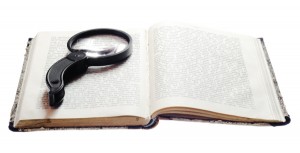Proof It

Count my hand raised. When it comes to others’ work, grammatical mistakes leap out, waving their arms and begging for a red-pen rescue. For all the delicate etiquette of criticism, it’s easy and oddly satisfying to search out and correct someone else’s errors. By contrast in my own work – there are three things I love: dashes, colons, and Oxford commas. They’re stylistic choices! Don’t ask me to edit them out, these littlest darlings. Correct them if you must. Just don’t tell me.
“Fresh eyes” are always distant from the work – they see what the near-sighted writer may have missed, and they look for blank spots in the landscape, where the writer hasn’t made her vision clear. Not only that, but good proofreaders know the rules of grammar backward and forward. I can crow about style, but my proofers can tell the difference between my voice and a comma splice. I won’t win that argument.
This world celebrates concrete problems with black and white solutions. Our judicial system, the scientific method, mathematical logic, records kept and photos taken all testify that we love our proof. Even the arts, random and subjective as they are, have fixed rules and methods that are trusted because experience proves them. Just as line edits proving the text are done after the story has been fully explored and captured, proof gives closure to new discoveries. We want to be convinced of the rightness of dawning understanding. Proof moves a matter out of the “Discovery” column and into the “Truth” column.
Yet Christ defies formulas for defining truth. He is truth independent of all else, and His call, challenge, and invitation to mankind is to discover Him at the moment of salvation and afresh each day. As Hebrews 11:1 proclaims, faith is the substance of things hoped for and the evidence of things unseen, and it is indeed its own proof. It’s not a closure but a gateway to truth. This is backward thinking to a world that doesn’t know how to reconcile belief in what it can’t see.
Christian artists have a unique service opportunity. We writers believe in things we see in our minds’ eyes, their only proof in the resonance of ideas to reality. Whether through fiction that catapults truth from heart to heart or non-fiction that frames human experiences in new ways, we have a chance to show distant readers our faith so that it leaps out at them. In the spirit of James 2:18, we can make it concrete for our readers in our works and in this way, have a part in bringing them closer to the discovery of the truth.